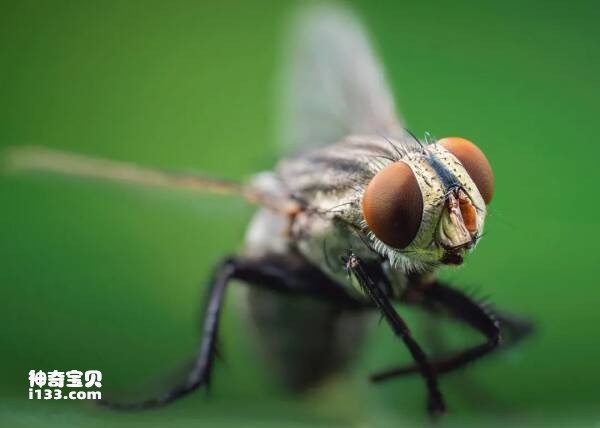Flies are represented by flies. They contaminate food, spread diseases, and are a nuisance. However, they have made considerable contributions to mankind. You may not believe it, so let us take a look at their performance.

①Synthetic antibiotics: A fly can carry six million bacteria, but it is rarely infected itself. Scientists have discovered that as flies grow and develop, their larvae synthesize antibiotics, making them immune to pathogens. Black flies and flesh flies produce 4 proteins that are lethal to Gram-negative bacteria and 3 proteins that are resistant to Gram-positive bacteria. Scientists are trying to extract these proteins, use genetic engineering technology to artificially synthesize antibacterial proteins, and then conduct experiments on mammals to ultimately achieve the purpose of treating human microbial diseases.
②Revealing the secret of anti-aging: Drosophila will help humans realize their long-cherished wish of "living a hundred years". After more than 20 years of research, Professor Ross from the University of California found that the life of fruit flies can be doubled, from 60 days to 120 days. Professor Ross was the first scientist to use fruit flies as experimental materials and use evolutionary techniques to explore the theory of aging evolution. Experimental results show that the longest-lived fruit fly is equivalent to a human life of 200 years. The current experiments have turned to mice and some higher animals.
③ Source of medicine to treat "cerebral thrombosis": In 1993, "Proceedings of the National Academy of Sciences" reported that there is a protein called Chrysoptin in deer flies, which can expand blood vessels and prevent the formation of blood clots, which is a cure.
④ Source of medicine to treat "osteoporosis": A research team from the University of Tokyo in Japan confirmed that a bioactive substance released by flies has the effect of inhibiting "osteoclasts" and can treat human osteoporosis. The researchers discovered this physiologically active substance in the compounds flowing out after pricking a fly with a needle dipped in E. coli. This substance named "5-S-GAD" has the effect of hindering the formation of protein phosphorus oxidase. Protein phosphorus oxidase can promote bone marrow cells to differentiate into osteoclasts that damage bone and copy cancer genes. Osteoporosis is caused by active osteoclasts.
⑤ Extract the sixth vital element - chitosan: Chinese and American scientists are cooperating to develop a polymer substance - chitosan - extracted from house flies. It is known in medical care as the successor to protein, sugar and fat. The sixth vital element of the human body after , minerals and vitamins.
⑥The invention of the electronic nose and gas analyzer: In addition to its outstanding eyes, flies also have an extremely keen sense of smell. The olfactory organs of flies are very good at collecting various odors floating in the air, and can even smell food sources up to 40 kilometers away. Scientists studied the olfactory system of flies and discovered the mechanism of how flies convert chemical reactions into the form of electrical pulses, uncovering the secret of their sensitive sense of smell. On this basis, scientists have developed electronic noses and gas analyzers to identify odors and determine the properties of gases. Electronic noses can be used on the battlefield to predict whether an enemy will use poison gas or to find victims in the rubble after an earthquake. Gas analyzers are used to measure the content and composition of gases in cabins such as submarines, aircraft, and space shuttles.
⑦ The birth of the gyroscope: Flies can always escape under the fly swatter. This is because there is a miniature balancer in the body - a balance stick. The balance stick vibrates more than 330 times per second, allowing the fly to maintain balance when flying and respond quickly when attacked by external forces. Flies can even move without using a balancer and are directly controlled by the visual system. The speed of signal processing by the fly's visual system is the fastest among known organisms. Based on the navigation principle of a fly's balance stick, scientists developed a gyroscope to solve the problem of aircraft rolling and tilting when flying at high speeds. Nowadays, gyroscopes have been widely used in navigation, aerospace, military and other fields.
animal tags:
We created this article in conjunction with AI technology, then made sure it was fact-checked and edited by a Animals Top editor.